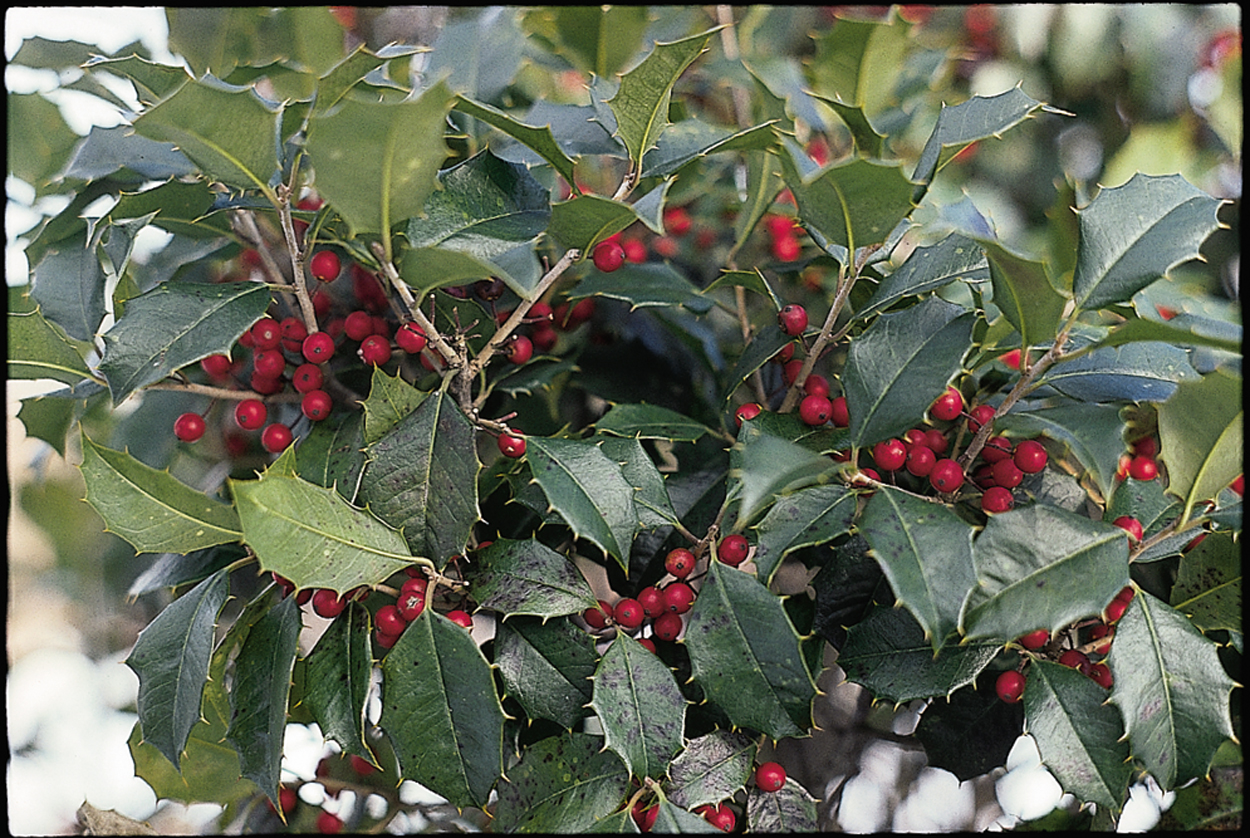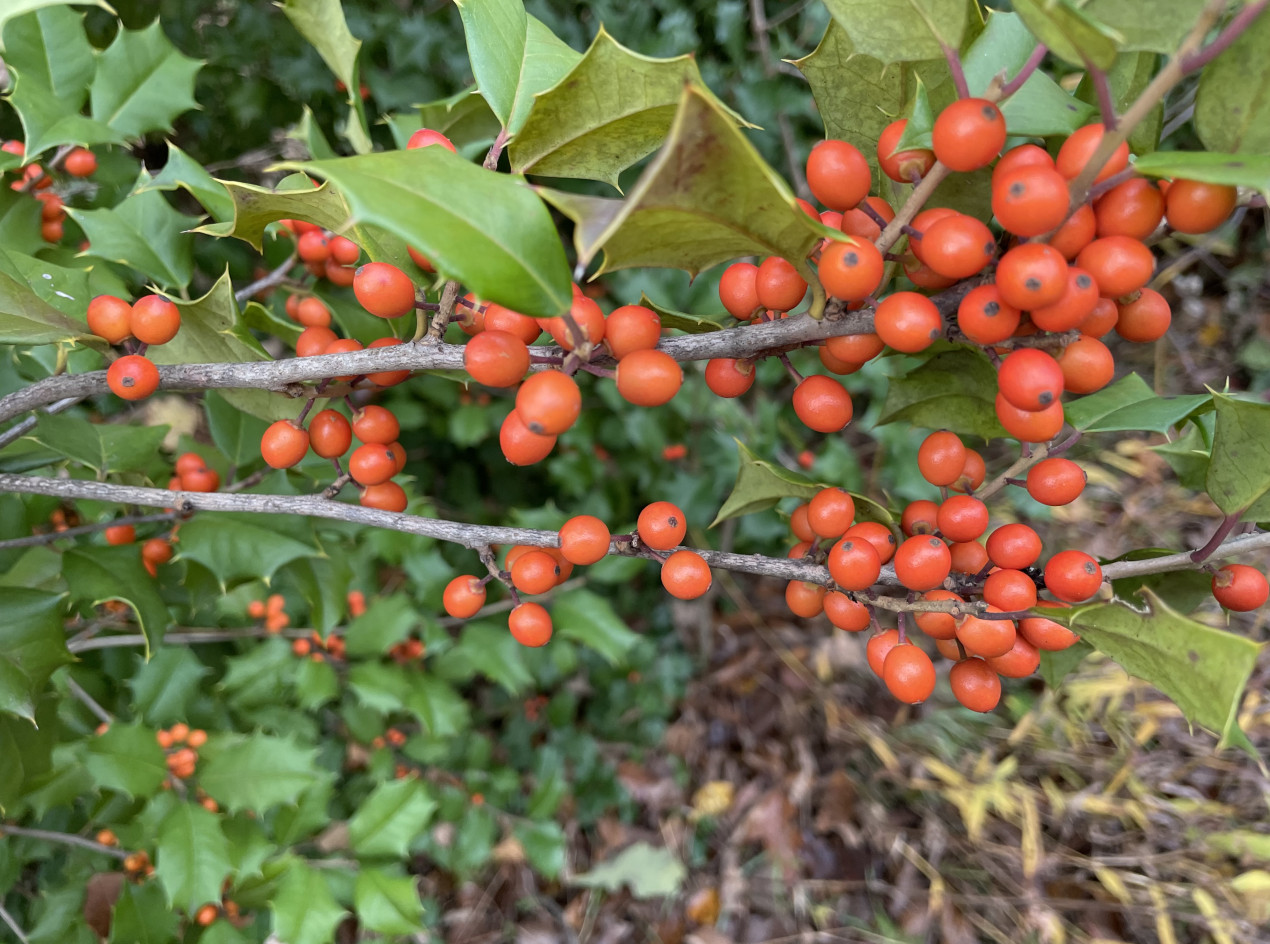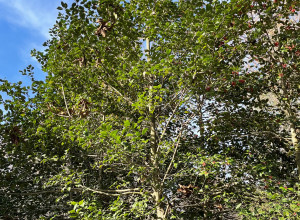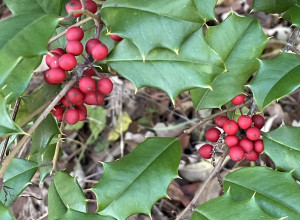Experience-Seeds-Knowledge-Plant Discoveries-Ecological Enrichment-Join Now Click Here!



American Holly is a wonderful broad leaf evergreen plant to see in the winter yet it is rarely found in modern day landscapes. Older vintage landscapes may contain a plant of it and once in a great while. It never caught on and was more or less in a cult following despites thousands of cultivars. Most of these cultivars are also found in the southern portion of its range as well. For now the Blue hollies from Monrovia Nursery and others rule the landscape trade. These created a niche for hollies that are smaller and more compact. Without the blue hollies there would be no evergreen Ilex. Its the only game in holly town. The deciduous hollies are used but no other evergreen hollies.
There are a few thousand varieties of the American holly, but often these are smaller statured selections available at specialist nurseries with few representing cultivars with tree like characteristics. The focus for breeding was mostly small diminutive landscape plants. Some selections have been made for berry production. That itself is not bad just you are leaving out the main characteristics of the species which is a forest type selection. I took the opposite direction and tried to find and propagate the forest type trees that are known as a important constituent of the eastern woodlands of which fruits are consumed by songbirds. It is ironic that one of this most important evergreen tree indigenous to North America is thought of as either a weed tree or just too prickly. Yet its amazing characteristics and its genetic diversity has captured horticulturalists more than any other species of plant with thousands of varieties of it.
I personally was interested in these large tree type hollies and began growing many seedlings as well as the Kline selections-the only tree like variety I could find. Eventually I began selecting individual plants from a seedling population of 3000 plants where vigor and winter hardiness were the priority. Many of these came from a tree at a local arboretum in a hill in a wide open field. Others were grown from a large tree found in Pennsylvania. Other selections came from some heavy fruiting types mostly from Wisconsin. It was this diverse seed sources that created my plantings.
Luckily it transplanted well out into my wide open fields despite my lack of care other than planting and mulching with sawdust. My selection process was based solely on vigorous growth without irrigation. This meant straight upright and tall trees along with finding plants that would withstand the windswept wide open area I planted them in. These seed selections have taken minus 25F a few times and survived even the most brutal cold winter winds with little or no foliage bronzing. It worked! The hollies survived in an area that was not conducive to hollies. It was not a plant that needed protection of a home or other microclimate to grow.
The berry production is very good. The female plants outnumber the male plants in my planting for some reason. A few trees have super heavy production of berries and others it is more of a small cluster effect. This seed strain is at least one zone colder than most American hollies in the southern portion of their range. Some fruiting types have large fruits and others are smaller.
This seed strain of American holly represents vigorous seedlings easily able to grow in a full zone 5.The fast growth of these trees makes them desirable for both nursery production which could lead to Christmas cuttings like winterberry as well as living Christmas trees. The strong growth, foliage and berry production, and large pyramid shape make this an ideal landscape tree into zone 5. Ultimate height is 60 feet. Trees can live up to 100 years old or more.
To germinate the seeds: The seeds are double and triple dormant and require a two year period to crack and grow. A small portion of the seeds will germinate even in the third year. The seeds have a tough outside coat which require the bacterial action of the soil to help break the seed coat. I plant them in flats outside which are covered by window screen which protects pilfering by rodents. In the second year after winter the seeds will germinate. (warm cold warm, warm cold warm) Having the seeds covered with sand will help with germination. 1/8 inch covering in sand. You will get a very high tree percentage from the seeds and rarely do they damp off. You can also use the refrigerator method with this same dormancy requirement.
'Merry Berry' American Holly: Selected female plant with incredible yields of berries far greater than most American hollies. Plants produce large clusters of red berries that display more on the outside of the plant. This plant was produced from a Wisconsin origin of American holly grown from seed about 25 years ago. The tree tend to be more wide than high and have very dense in foliage with a dense branching habit similar to a pruned scotch pine tree. Combined with its berry production these would make a fabulous wind break tree. I have them several seedlings of this same seed source on an exposed site at my farm and they never suffer from wind burn. Cuttings available on request with the order of the seeds.
'Vigoro Grow' American Holly : Selected both male and female plants just for fast growth. Berry production is secondary on the female plants. Represents the fastest growing of five or more plants in my planting that out grew all the others and had the tallest growth after 25 years. It was apparent these had the most vigor and could outgrow others in the same class. This is an excellent form for seed production to produce further cultivars as well as an improved seed strain. Cuttings available upon request with an order of seed.
Seed collected December, 2023 and January 2024.
| Plant Specs | |
| Genus & Species | Ilex opaca |
| Seed Source | Michigan, Pennsylvania originally as well as Wisconsin in pure zone 5 locations. |
| Hardiness | minus 25F or more-Wind swept areas is fine with this selection. |
| Height (ft) | 40-80 ft. tall and equal width. Pyramidal in shape. |
| Pollination Requirements | Our plantings are predominantly female despite being randomly selected by vigor alone. But normally you would expect a 50 -50 mix male and female like persimmon. You need both to get fruit set. |
| Soil | Tolerant to dry soil conditions once established. Vigorous in poor sandy soil with low organic matter. Slightly acidic is best but most soils do not need additional acidifiers to make this species grow. |
| Climate | Zones 5-9. Has thrived in zone 5. Will easily grow in the south as well. |
| Ease of Cultivation | The tap root goes deep and the lateral roots increase. This species is easy to transplant large and responds well to container growing. Can be pruned to a central trunk or let go and several trunks will fan out over time. The flowering is heavy in the spring attracting many types of bees including honey bees. You can speed up the growth using high nitrogen based fertilizers. |




